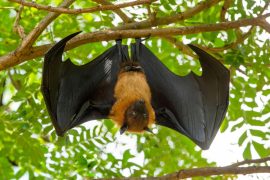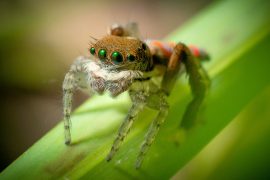Pteridophytes (Spore Producing Plants: Ferns and More)
Alternative titles: Pinophyta, Coniferophyta, Coniferae
Pteridophytes are ancient plants commonly called ferns or fern allies. Pteridophytes are considered a class of plants that fall between bryophytes and seed plants in evolutionary terms.
Ferns and their allies are found everywhere, and they are some of the most prevalent plants in certain ecosystems. Additionally, many ferns are grown as ornamentals because of their beautiful foliage.
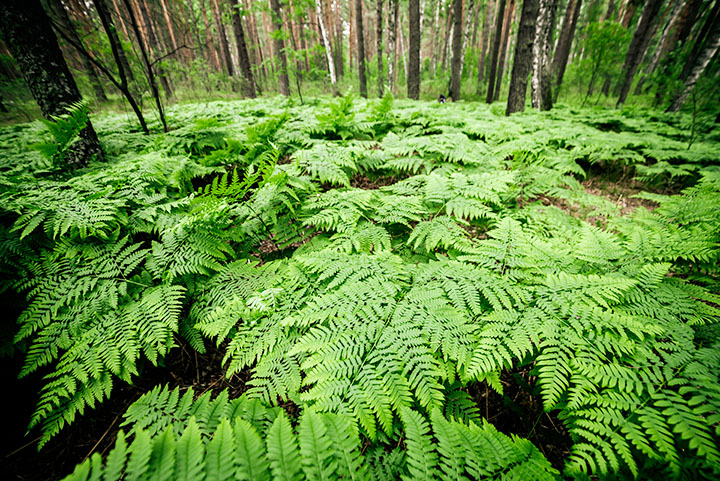
What Are Pteridophytes?
Pteridophytes are vascular plants that produce spores, such ferns, horsetails, clubmoss, and spikemoss. Pteridophytes are distinguished from other spore-producing plants, bryophytes, by their vascular tissue. Their lack of seeds also distinguishes them from other vascular plants, such as gymnosperms and angiosperms.
Pteridophytes Are Vascular Plants
Pteridophytes are part of a large group of plants known as tracheophytes. Tracheophytes are plants that have a vascular system that allows water and nutrients to move throughout the plant.
When they diverged from bryophytes millions of years ago, the pteridophytes became the first group of plants to develop vascular tissue. Pteridophytes contain two kinds of vascular tissue – xylem and phloem.
- The xylem transports water and minerals.
- Phloem transports nutrients like sugars and carbohydrates.
Most Pteridophytes have bundled vascular tissue. In other words, when viewing a cross-section of a stem, there are distinct bundles of xylem and phloem.
Some ferns have vascular rings surrounding the pith in the stem. Vascular bundles and vascular rings are similar to the vascular tissue organization of two angiosperm groups, monocots and dicots.
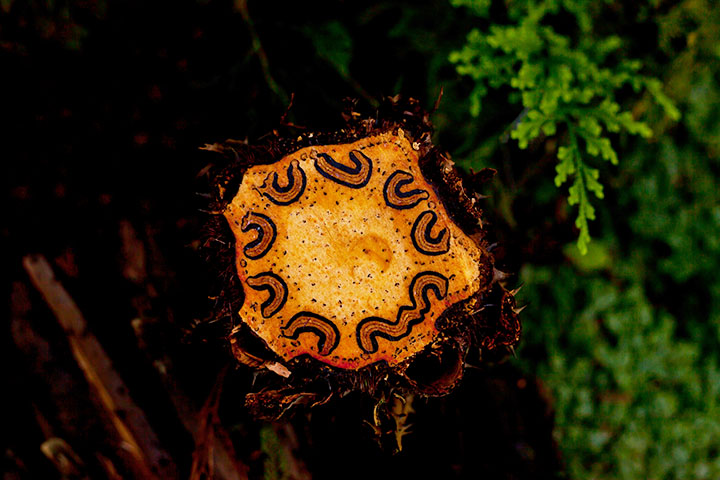
Tree fern stem showing vascular bundles in black.
Differences Between Pteridophytes and Seed Plants
The fern family, as well as its relatives, are vascular plants, but their reproduction is vastly different from the reproduction of gymnosperms and angiosperms.
Unlike seed plants, pteridophytes do not produce cones, flowers, or fruit. Instead, Pteridophytes produce spores. Spores are living, single-celled structures that are vital to the life cycle of many plants.
Life Cycle of Pteridophytes
There are many similarities between the life cycle of pteridophytes and other spore-producing plants. As we proceed through the next sections, we'll explore how pteridophytes reproduce as well as the unique structures involved.

Alternation of Generations
A pteridophyte is like many other plants in that it undergoes alternation of generations. Thus, a pteridophyte plant must complete two separate generations before its life cycle is complete.
Sporophyte
The main generation is the sporophyte, which is the dominant phase. The only generation that is noticeable is the sporophyte. Hence, all ferns growing in the forest belong to the sporophyte generation. Two copies of each chromosome are found in each sporophyte cell, making it a diploid (2n) organism.
Sporophytes produce sporangia on the underside of fertile leaves and stems when they reach maturity. Such fertile fronds are called sporophylls. A sporangium is a structure within which seed spores develop during meiosis.
Pores are released from sporangia under dry conditions when the outer casing cracks and opens. To start the next generation, the gametophyte, the spores are dispersed by wind or water.
When a pteridophyte produces one type of spore, it is called homosporous. Unlike heterosporous plants, homosporous plants produce only one kind of spore containing both male and female parts. The resulting gametophyte is monoecious.
Conversely, a pteridophyte that produces more than one type of spore is known as heterosporous. Heterosporous plants produce two types of spores - megaspores and microspores - which are female and male, respectively. Thus, the gametophytes that result from heterosporous plants are dioecious, either female or male.
Gametophyte
Gametophytes, sometimes called prothallises, are multicellular, microscopic, and usually short lived. Gametophytes reproduce sexually, unlike sporophytes. Because it cannot self-fertilize, it must reproduce with a nearby, genetically distinct individual.
Through mitosis, gametophytes produce gametes (eggs and sperm). These gametes are haploid (1n) containing only half of the genetic information of the plant, and are formed in structures called archegonia or antheridia.
Eggs are produced by the archegonium, while sperm are produced by the antheridium. Using its flagella, a sperm swims to an archegonium attracted to chemical signals in water. Once it arrives, it fertilizes the egg contained within. It is only possible to reproduce sexually when water is present. As a result, pteridophytes rarely grow in dry, extremely hot climates like deserts.
The fusion of a sperm and an egg produces a zygote. The new structure is diploid and becomes a new sporophyte through mitosis. Finally, we have reached the end of the life cycle.
Pteridophyte Groups and Diversity
There are about 12,000 pteridophytes species. Although ferns and their allies are not as diverse as other groups of plants, like flowering plants, they still exhibit an impressive range of forms and functions.
Pteridophyte taxonomy has been changing constantly for some time now. The group “Pteridophyta”, which no longer exists, was once used to encompass ferns and fern allies. Pteridophyte classification has changed dramatically in recent years thanks to genetic and molecular analyses.
In this article, we follow the most recent and widely accepted classification of pteridophytes made by the Pteridophyte Phylogeny Group. There are several smaller orders and families of Pteridophytes not included in the following list.
Lycopodiopsida
Lycopods are "allies" of ferns and fern allies and are sometimes referred to as lycophytes. The lycopods are the oldest group of vascular plants because they were the first to evolve among pteridophytes.
Lycopodiales (Clubmoss)
In the lycopod group, clubmosses (sometimes written as clubmoss) are the oldest. They originated around 380 million years ago. There are around 400 species in the family Lycopodiaceae, which is part of the order Lycopodiales. The largest genus in the family is Lycopodium.
Clubmosses are slender, herbaceous plants with leaves called microphylls. As microrophylls are compressed to the stems, they create scale-like structures and give the plant its prehistoric appearance. It is generally believed that clubmosses are homosporous, and their spores grow on special structures called strobili. The strobilus is found at the ends of stems and gives clubmoss its name.
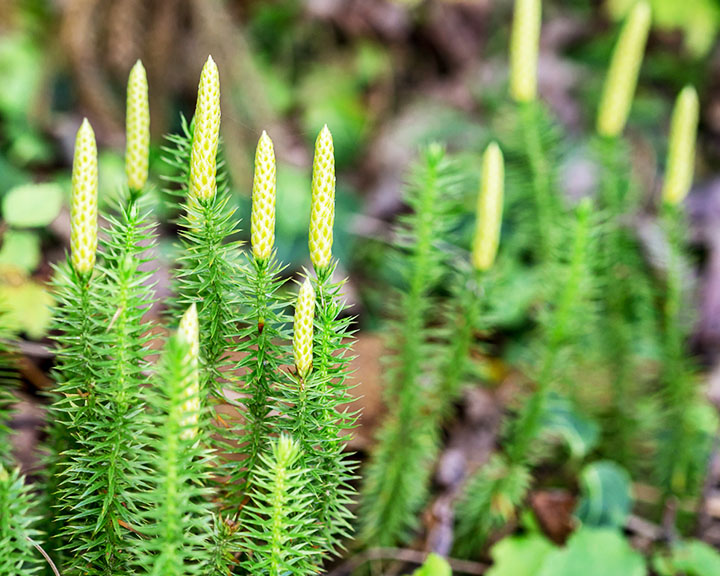
Selaginella (Spikemoss)
The other main group of lycopods are called spikemosses. There is just one genus in the order Sellaginellales, Selaginella, which contains all spikemosses. Spikemoss differs from clubmoss in that it has ligules, which are tiny structures between the leaf and stem.
In addition, spikemosses are heterosporous, and the general growth form of spikemoss also differs from clubmoss. Spikemosses typically grow along the ground and rarely grow higher than one meter.
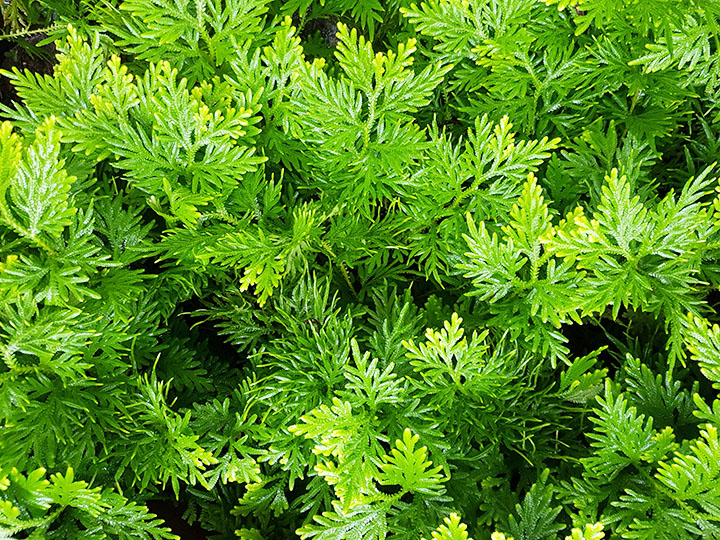
Polypodiopsida
Ferns, or Polypodiopsida, are the main group of pteridophytes. Ferns are divided into several orders with a total of 10,500 species. Ferns produce leaves that are generally more complex than lycopods. Fern leaves tare known as fronds and often branch multiple times.
Equisetales
Plants in the order Equisitales are not normally associated with ferns. It is considered a fern, however, as it is part of the Polypodiopsida group. The main genus of Equisitales, Equisetum, contains horsetails and scouring rushes.
Plants of this genus have a segmented stem and whorls of thin leaves at each node. They are often aquatic or weedy at many disturbed sites. Horsetails are all homosporous and produce spores on a strobilus, much like lycopods.
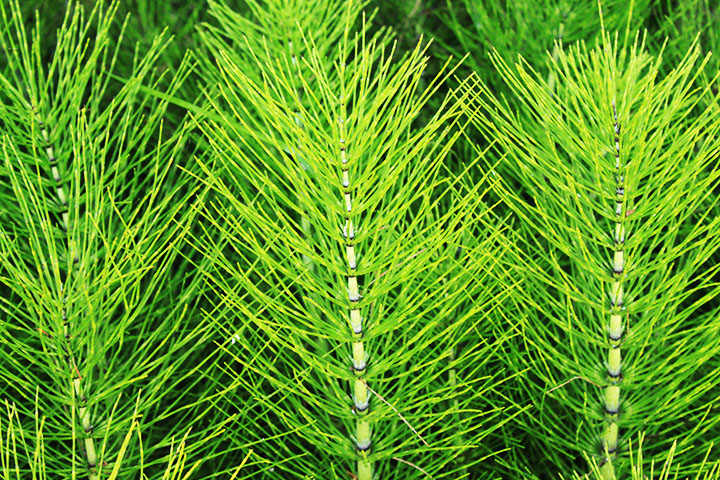
Psilotales
The Psilotales group contains one family, Psilotaceae, and two main genera, Psilotum and Tmesipteris. In these ferns, the leaf size is relatively small, and the sporangia form yellow balls on the stems.
Psilotum ferns are commonly known as whisk ferns. These spindly ferns grow almost exclusively in tropical regions in the Americas and Asia. The Tmesipteris genus grows mainly in Australia, New Zealand, and New Caledonia.
Ophioglossales
Ophioglossales contains a single family, Ophioglossaceae, otherwise known as tongue ferns. There are two very interesting differences between tongue ferns and other ferns. Many species of tongue ferns only produce one frond each year. Second, the gametophyte lives in subterranean conditions, using mycorrhizal fungi as a source of energy.
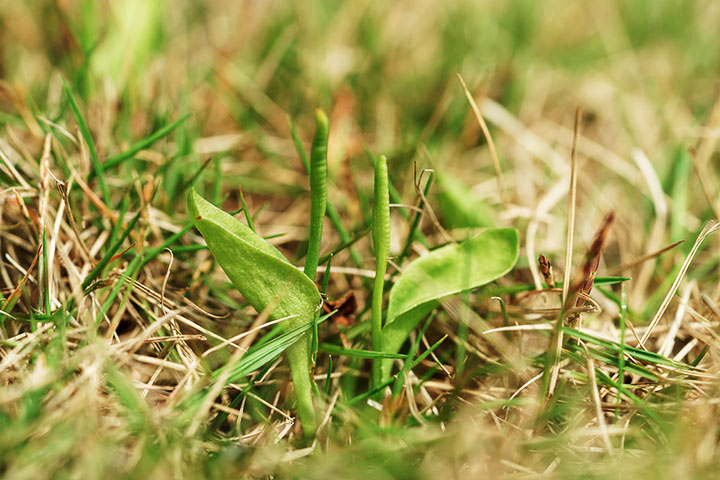
Hymenophyllales
Similarly, Hymenophyllales consists of only one family, Hymenophyllaceae. Due to their delicate, sometimes translucent fronds, these ferns are commonly known as filmy ferns.
Filmy ferns are commonly found in habitats with abundant rain or running water since the fronds are delicate and prone to drying out.
Salviniales
The water fern family, Salviniales, is unique in that all species are aquatic. A second unique characteristic is that all of them are heterosporous, as opposed to most other ferns.
The mosquito fern (genus Azolla), one of these ferns, is amongst the fastest-growing plants on earth. Marsilea, another fascinating member, is similar to a clover and has been consumed by Aboriginal Australians for millennia.
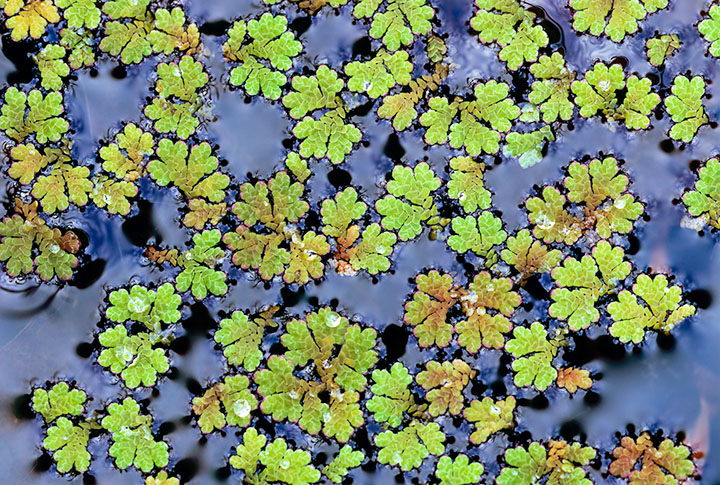
Cyatheales
The Cyatheales group of ferns is known as the tree ferns, and is one of the most unique groups of ferns. The tallest of the Pteridophytes, these massive plants can reach a height of 10 meters (30 feet).
This group is unique in the fact that its tree-like habit probably evolved via convergent evolution. In Cyatheales, this type of growth is not unique to one group, and many groups have ferns that look more like typical ones.

Polypodiales
Polypodiales is by far the most diverse group of ferns. In this Order, there are 26 families of fern species that comprise 80% of the entire fern genus. In this group, all ferns have an annulus, a specialized structure found on sporangia that helps disperse spores.
As the annulus dries, it snaps off the sporangium, mechanically launching the spores away from the plant. In Polypodiales, the annulus is unique, distinguishing this group from all other ferns. A few of the most important families in this group are:
Dennstaedtiaceae
In the Dennstaedtiaceae family, there is a fern known as bracken fern fern (Pteridium aquilinum), which has a worldwide distribution. The ultra-light spores of the bracken fern helped spread the species around the world.
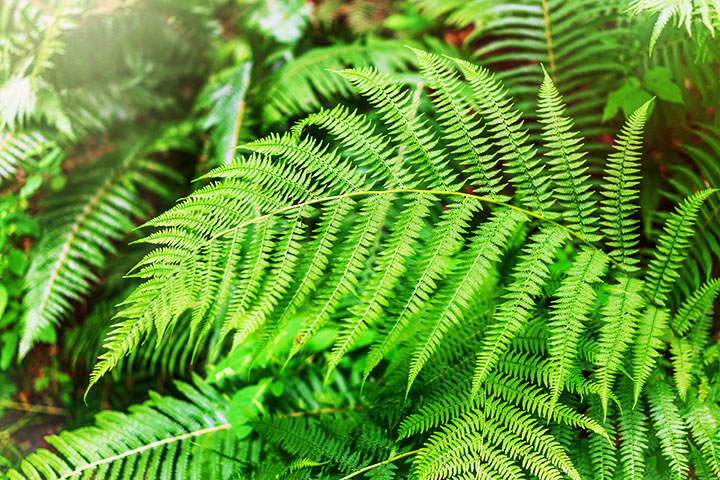
Pteridaceae
Pteridaceae contains maidenhair ferns (Adiantum), shoestring ferns (Vittaria), and brakes (Pteris).
Dryopteridaceae
Dryopteridaceae is one of the largest fern families, containing many diverse genera such as Elaphoglossum, Polystichum, and Dryopteris.
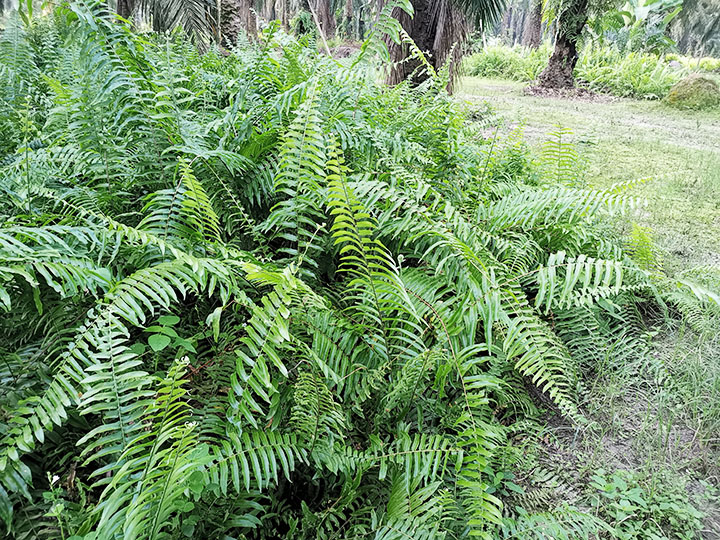
Conclusions
Despite their ancient history, ferns have endured for millions of years and developed a wide variety of growth forms. The only seedless vascular plants in the world, ferns represent a transition between bryophytes and seed plants. They make up a vital part of many habitats and ecosystems across the globe.
Despite the fact that Pteridophytes are not cultivated as crop plants, they are used in many traditional ways. Pteridophytes have also been used as centerpieces of various types of art because of their fragility and prehistoric look.
-----
Like what you read? Subscribe to our newsletter for engaging articles, exclusive content, and the latest updates.
Check us out on EarthSnap, a free app brought to you by Eric Ralls and Earth.com.
-----
families in pteridophytes
Jump to families starting with:
News coming your way






















